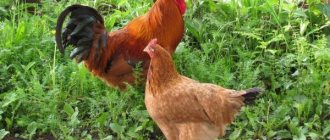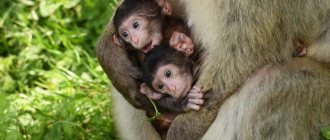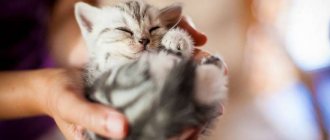Chinchillas are the longest-livers among all rodents, but it is difficult to answer how long chinchillas live at home. Everything directly depends on the quality of care for the animal and how strong its body is.
If you get a healthy individual, then it can live with you for many years and at the same time will be active throughout almost its entire life. Since the animal lives for a long time, it is necessary to prepare for this in advance. You will have to feed her, walk her, bathe her and treat her for several years. To answer the question of how long a chinchilla lives, read below.
Lifespan of chinchillas at home
On average, chinchillas live 10-15 years. With careful care, they live up to 20-28 years, but for this you need to maintain the ideal temperature regime and proper nutrition. Genes also play a big role, against which nothing can help; if there are genetic diseases in the family, they will sooner or later destroy the chinchilla.
If you want your chinchilla to live 15 years or more, read the rules for keeping and caring for this fragile animal. Then you will be able to provide him with comfortable conditions and detect diseases in the early stages.
Factors that influence life expectancy:
- Climate in the room. Temperature, humidity and lack of drafts
- A properly equipped cage with plenty of space
- A balanced diet that changes depending on the season and the chinchilla’s health status
- Hygiene, the animal must bathe in the sand and clean its fur
- Cleanliness of the cage and timely cleaning in it
- Absence of excessive noise in the room and other irritants that cause stress
Accommodations
Keeping chinchillas at home is quite an expensive pleasure.
Cell
To begin with, they need a large cage. The minimum WxDxH for one animal is 70x50x50. If there are several of them, then the width and depth increase to at least 90 and 70 cm, respectively.
If you are planning to breed chinchillas at home, then do not buy a high cage - they very quickly learn to climb walls and can fall and get injured.
The cell sizes are 1.5 by 1.5 cm for the bottom and 1.9 by 1.9 cm for the walls and roof. The cage must be galvanized and not painted. It will be more convenient for you to clean up after your pet if the cage has a tray that can be easily pulled out.
Feeder and drinker
They cling to the wall of the cage, otherwise they risk turning over or becoming a latrine. Nowadays it is no longer a problem to find and buy special drinking bowls for rodents, equipped with ball-shaped dispensers at the end of the tube.
It is better to take a chinchilla feeder made of metal or ceramic. By the way, there should be as many of them as the types of food you give the animal.
You also need to put a special pebble to grind down the teeth, because your rodent is still growing.
House furnishings
The cage should have a shelter, approximately 30x15x15 cm in size, with bedding that is easy to take out and wash. If you are planning breeding, then you need as many houses as there are chinchillas. Residents often quarrel among themselves, like real married couples, and live in different apartments.
Shelves with a width of at least 15 cm are hung along the walls of the cage. All kinds of ladders, tunnels and passages are also welcome, you can put a wheel.
Water procedures are taken in baths, which are filled with special fine sand (you mix zeolite and bathing sand - 2 packs are used in about six months). You can create a bathhouse yourself - from a three-liter jar or an old saucepan. Such a bath is installed for a chinchilla at home for 20-30 minutes 3 times a week. You can’t do it more often – the skin gets too dry. After bathing, the sand can be cleaned through a sieve.
How long do chinchillas live in the wild?
This issue has not yet been studied, since chinchillas began to be studied about 50 years ago. Now there is approximate data that says that chinchillas in the wild live up to 30 years, but most die before 15 due to predators, injuries, bad weather and lack of food.
The longevity of chinchillas is explained by their nocturnal lifestyle and extreme caution. When they come out of hiding and see danger, they always warn their fellow tribesmen and brothers about it. They live in fairly large flocks, which greatly helps them in finding food.
The climate in which they live is arid and cold, so there are few parasites and harmful bacteria that can easily kill the animal. There is quite a lot of food for them in nature, as they feed on dry plants, fallen berries and tree branches. It seems that this is not enough for them to provide themselves with all the vitamins, but in fact in nature they have enough of everything.
Population and species status
Today we can safely say that these animals are facing complete extinction. This mainly concerns chinchilla populations in the wild. According to experts, over the past 15 years the total number of these animals has decreased by almost 90 percent. In 2022, scientists knew of only 42 colonies of animals living within the South American continent. Scientists also believe that there are so few animals left that there is no need to talk about an increase in the population.
They began sewing such fur coats in Europe in the 19th century. From 1828 to 1916, about 7 million skins were exported from Chile, and in total up to 21 million animals were destroyed and exported. The figure is such that the hair on the head rises spontaneously. Only in 1898 were laws passed prohibiting hunting and export. Unfortunately, it was very late and such bans are no longer able to influence the decrease in the total number.
How to extend the life of chinchillas
The first thing to do is to provide good nutrition and not overfeed with treats. Next, make sure that the room has the correct microclimate and the temperature and humidity are optimal for chinchillas. Also, we must not forget about the mental health of chinchillas, because if it is weakened, then such an animal will not live long and will not bring you joy, since it will constantly run away, scream and you will not receive any affection from it.
There are many reasons for premature death, but most often it is the human factor, as pets are not kept correctly:
- Genetic diseases
- Incorrect feeding. Lack of food or overfeeding treats
- Due to gastrointestinal diseases that were not treated in time
- Hypothermia or overheating
- Constant stress
- Injuries
Now we have not yet fully learned how to properly maintain chinchillas so that they can live longer at home, because there is very little information on them. The domestication of chinchillas began only 50 years ago, and in Russia they became popular only 10-12 years ago. Most of the information that is out there is not supported by encyclopedias or the works of famous veterinarians. The area is not of great interest to scientists, so the owners make do with the accumulated experience of other people and communicate with each other on forums.
Lifespan
The average life expectancy of a chinchilla at home and in the natural environment is significantly different. But in any case, this indicator for representatives of this family is much higher than for most other rodents.
At home
At home, chinchillas live almost twice as long as in the wild - up to 18-20 years. And with proper care and good health, the animal will live quietly for up to 25 years. The longevity of domestic chinchillas is explained by the following factors:
- abundance of food;
- absence of natural enemies;
- comfortable living conditions;
- no threat from humans.
Therefore, these cute fluffies are very often chosen as pets, especially by families with children. After all, with such a long-lived pet, the child’s psyche will not suffer from the sudden death of the animal.
In nature
In their natural habitat, chinchillas live 8-10 years; long-livers live up to a maximum of 12 years. The following unfavorable factors prevent fluffies from living peacefully into old age, which occurs around the age of 20:
- Living in a rocky area . As you know, the vegetation on the rocks is quite sparse. Therefore, the diet of wild chinchillas leaves much to be desired. Mosses, lichens and grass are, of course, healthy food. But it is low in calories and does not contain enough protein. Therefore, the body of chinchillas in nature weakens early, and the animal has practically no chance of a long life.
- Predators . Chinchillas are a favorite treat of tayra and foxes. The fluffies cannot hide from the first ones even in their favorite refuge - the gorge. After all, the small tyra also penetrates into crevices without difficulty. In addition, snakes and some birds (eagle owls, owls, buzzards) are not averse to feasting on chinchillas.
- Poachers . As you know, chinchilla fur is very valuable. Sewing one fur coat takes 200-250 skins. Therefore, cute fluffies often become victims of humans.
Additionally, the animals suffer from unfavorable environmental factors. In Latin American countries, which are the natural habitat of chinchillas, little attention is paid to environmental safety. Therefore, industrial enterprises actively pollute the atmosphere, soil and rivers with insufficiently treated discharges.
Healthy eating
If you provide your chinchilla with all the vitamins, minerals, fiber, etc., then it will not have health problems, which means the body will be strong.
A chinchilla's diet should include high-quality dry food, plenty of hay and clean drinking water. In the off-season seasons, it is necessary to add useful herbs to the main feed, which will strengthen the immune system and prevent the most common diseases.
Don't forget to feed your chinchilla treats to keep her happy and get healthy oils, acids and vitamins from them. But, under no circumstances give them a lot, otherwise the animal may suddenly gain weight and damage its liver.
Under no circumstances should you give food from the table to people or juicy foods; you should absolutely not give fried, salty, fatty or sweet foods. Only dry food and hay, which are selected specifically for chinchillas.
Sweet home
It is better to choose a spacious cage for your pet. It would be good if it had a small house, a closed compartment. Chinchillas love privacy. Individuals are found to be very active, they rush around the cage day and night, sleeping only a few hours a day. But it happens the other way around, the animal is lethargic and constantly dozes. Just like humans, they have character and temperament, so watching them is a pleasure.
With proper animal care, you will not have to worry about how long your pet chinchilla lives. The bottom of the cage should be dry and strewn with sawdust or special filler. Paws should not step on moisture. This animal even bathes in the sand. Water is unacceptable to them. The fluffies drink from special sippy cups that hang on the wall.
Proper care
If you have a chinchilla, then be prepared to carefully care for it. This requires time and money to provide the animal with everything it needs.
For comfortable maintenance you need:
- Clean the cage regularly. Superficial cleaning every 2-3 days and once a week changing the litter with wet cleaning. Once a month general cleaning.
- Buy or make a spacious cage for chinchillas, because they are very active and need somewhere to put their energy. If the cage is narrow, then the chinchilla will sit still, and this will cause it to become obese, as well as stress from a boring life.
- Provide your chinchilla with peace and quiet. There should be no shouting, running around or loud music in the room. The animals are very shy and if they live in stress for a long time, they may have a heart attack or stroke.
- Don't bathe in water. Chinchillas are not washed; they clean their fur in a bathing suit using special sand. If you don’t dry the chinchilla after water or wash it in cool water, it will get hypothermia, and this is a very dangerous condition. In addition, swimming in water is a huge stress for chinchillas, which spoils the health of the animal.
- Cabin or hammock. Chinchillas, of course, can sleep on a bedding, but they are used to sleeping in a house or on a hammock. They love to hide, because it is in their nature. Buy your pet a small house or sew a hammock in which he can sleep and he will be very grateful to you.
- Buy a bathing suit or make it yourself. It not only helps chinchillas clean their fur, but also relieves stress while bathing.
Determining the age of a chinchilla
There are several ways to determine how many years or months an animal has already lived.
By weighing
By weighing the animal, you can determine its approximate age using the table below.
| Age in months | 1 | 2 | 3 | 4 | 5 | 7 | 8 | 9 | 10 | 11 | 12 | |
| Weight in grams | 50 | 100-110 | 140-160 | 210-230 | 230-250 | 320-330 | 380-390 | 430-440 | 465-485 | 490-500 | 520-535 | 600-620 |
Of course, the indicated values are approximate, since the animal’s body weight depends not only on its age, but also on feeding and living conditions in general. One thing can be said for sure - if an animal weighs more than 1 kg, it is definitely older than one and a half years.
Visual inspection
Determining the approximate age of an animal is also possible “by eye”.
Young animals are active and restless. They are interested in everything they see around them and try to study every object they discover. Older chinchillas are calm and measured; they usually do not even show interest in new objects.
As for the examination, you can determine the age of the animal:
- by body size - the larger the animal, the older it is;
- along the length of the neck and muzzle - up to six months of age, both the muzzle and the neck of a chinchilla are short, in an animal older than 6 months they are elongated;
- by the shade of the teeth - babies fed on mother's milk have snow-white teeth, but as soon as the animal switches to roughage, its teeth begin to turn red (the richer the orange pigment on the enamel, the older the animal);
- on the paws, or rather, feet.
Paw inspection
Young animals have soft and pink feet. In adult animals, the skin on the feet gradually becomes rougher, and calluses form. The more there are, the older the animal being examined.
Monitor your health
Diseases in chinchillas are mostly typical and if treated in the first stages, they do not pose any danger to life. It is necessary to constantly examine the chinchilla, weigh it and look at its activity. If the chinchilla becomes lethargic, drinks and eats less, then it is sick with something.
Common diseases of chinchillas
- Digestive diseases
- Teeth grow incorrectly, hooks form
- Metabolic disease
- Hypothermia or overheating
Most often, chinchillas die when the owners do not attach importance to diseases and believe that diarrhea or bloating will go away on its own. As a result, the chinchilla gets worse every day and if urgent measures are not taken, it will die.
Home treatment is most often done to save money, but without experience, it can only cause harm. Therefore, do not risk your animal and contact a veterinarian, who will usually make a diagnosis and prescribe treatment in one visit, which you can continue on your own.
Injuries
Getting injured in a cage is very difficult and extremely rare. Typically, chinchillas are injured due to human fault when they are allowed to walk around the apartment unattended or given to children to play with, who with careless movements and squeezing can accidentally break the bones of a fragile animal.
To avoid injury, you do not need to pick up the animal without its desire, i.e. Until you tame him, don't touch him. He will try with all his might to escape from your hands.
A chinchilla can get injured in a cage if it is very narrow. The animal loves to run and climb obstacles, and in a small cage it will constantly hit objects. It is also necessary to securely secure all ladders, shelves and hammocks so that chinchillas do not have the opportunity to fall and injure themselves.
Taming and walking
Chinchillas are self-sufficient animals by nature, preferring solitude. They cannot be raised and tamed like dogs or cats, although there are exceptions. Some furry representatives show affection and happily sit in the arms of the owner.
How to tame a pet chinchilla:
- During the first days of a week of living in a new home, the rodent needs to adapt. During this period it is better to leave him alone.
- Starting from the 3rd week, you can begin taming: talk to your pet, try to open the cage and extend your hand to the chinchilla. This may interest her, she will begin to sniff the palm and quietly bite the fingers. Chinchilla bites are absolutely safe and painless.
- When the chinchilla gets used to the owner's hand, it can jump onto the palm. The owner does not need to make sudden movements and try to pull the pet out of the cage. At first, such communication procedures are enough.
- For any success in training, you can reward your chinchilla with a tasty treat.
- When the rodent gets used to the person, you can try to lure him out of the cage and put him in your arms. Prepare a treat for your furry friend in advance. Gently stroke the fur on the neck, ears and chest, encouraging the animal with kind words. Try not to stroke your chinchilla's back or sides; he won't like it.
- Communicate with the chinchilla, calling it by name, let it get used to its nickname.
- Do not pick up your chinchilla against its will. She may get scared and bite or scratch in self-defense. Another fighting technique of this rodent is shooting urine at the enemy.
If a chinchilla finds contact with its owner unpleasant, it will make a dissatisfied noise. At such moments, it is better to leave the rodent alone and postpone all attempts to tame the pet to another time. Let her calm down and get used to attention from people.
Feeding
The quality of food will determine how many years a chinchilla will live in your home. The animal needs to be fed with special granulated food, with the addition of vitamins and treats that it will like.
The animal will happily eat dried fruits, rose hips, dried chamomile flowers, hibiscus, dandelion and cornflowers, and dried carrots.
Every day, a chinchilla should consume hay with various additives - nettle or rose hip flowers - these foods can be purchased at a pet store.
Share
Causes of premature death
A chinchilla at home rarely dies of old age. Most often, her death is premature and caused by human factors. Rodents began to be domesticated not so long ago, and bred in apartments no more than 30 years ago. There is still not much information about the proper feeding, keeping, and care of rodents, and some of the information, especially on feeding, is controversial.
Causes of premature death include:
- Incorrect feeding
- Improper maintenance and care
- Injuries,
- Diseases.
Improper feeding
How long chinchillas live in an apartment directly depends on feeding. And it is improper feeding that is the most common cause of rodent death. Very often, breeders think that domestic chinchillas are like hamsters or rats - omnivores. And they try to treat the pet with a product that is not intended for the delicate digestive system of a rodent. The result is severe food poisoning, volvulus, intestinal obstruction and death within a very short period of time.
Another danger of improper feeding is non-compliance with the diet and diet. This leads to obesity. Obesity negatively affects the functioning of the heart, metabolism, and immune system. As a result, the animal begins to suffer from a variety of diseases, and most often dies from cardiac arrest or exhaustion as a result of taking too many medications.
Improper care and maintenance
The lifespan of a pet is inextricably linked with proper care. Chinchillas should live in spacious cages and be able to move a lot and actively. Lack of movement leads to obesity, digestive problems, and stress. Animals are very sensitive to everything new - many breeders forget about this. Sharp and loud noise, constant new people in the apartment, a lot of bright light - all these are causes of stress, which over time can lead to a heart attack or stroke.
Stress is also caused by the owner’s desire to take his rodent for a walk, as well as water procedures, and a sharp change in temperature in the room where the cage is located.
Injuries
Injuries are becoming a very common cause of premature death in chinchillas among novice breeders.
Very often the animal does not live even a year - careless handling of the owner entails sad consequences. Usually animals that just got into a new home are injured: a person wants to quickly accustom the furry baby to his hands, but the animal does not like this attitude
He begins to break free, bite and as a result falls to the floor. A fall can cause broken ribs, back, neck and legs. Most of the fractures result in either euthanasia or natural death from shock, stress, internal bleeding and irreversible damage.
Very tight cages also lead to injury. Chinchillas are accustomed to constant movement: they love to jump, run, play, and climb. In a tight space, especially if there are two or more animals in it, injury cannot be avoided. A chinchilla cage should be spacious, multi-level and have many shelves, holes, and shelters - then the animal will live not only long, but also happily.
Diseases
Diseases can be caused by improper maintenance, improper feeding, and violation of quarantine. The symptoms of many diseases are similar and only a radiologist can determine how dangerous a given ailment is. This is the most common problem: in many cities there are no good specialists who understand rodent diseases. And most breeders, especially those for whom this is their first experience, do not attach importance to the first symptoms and are in no hurry to consult a doctor for help. Many people look for advice on the Internet to save time or money. The result is usually very sad.
Deadly diseases caused by improper feeding:
- Poisoning,
- Pseudomonosis,
- Intestinal obstruction,
- Diarrhea,
- Salmonellosis.
Most often, pathogens enter the pet's intestines with low-quality food: food may be poorly washed, contain traces of rot, mold, or be collected in pet walking areas, near roads, large industrial enterprises, and landfills.
Diseases caused by improper maintenance:
- Stroke,
- Staphylococcal infections,
- Yersiniosis,
- Listeriosis.











